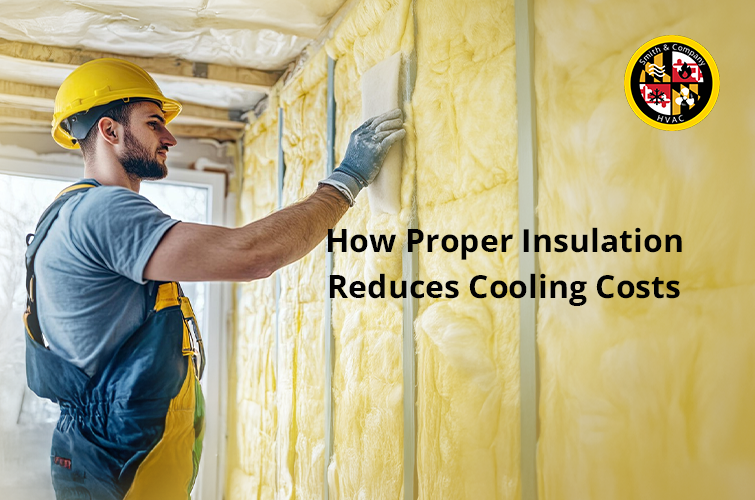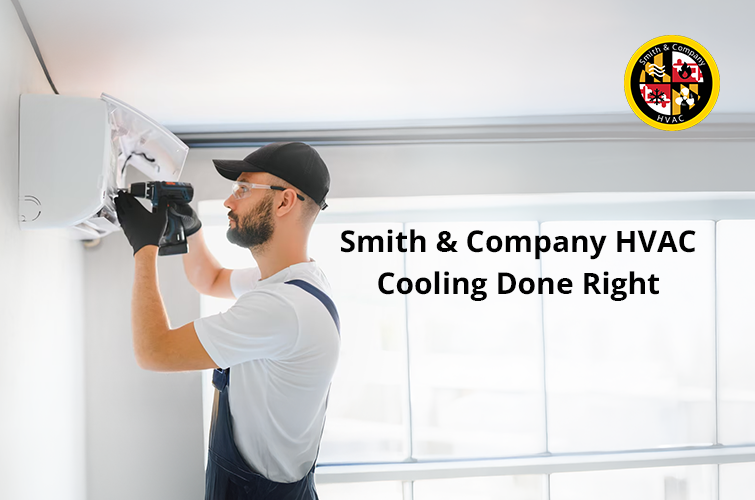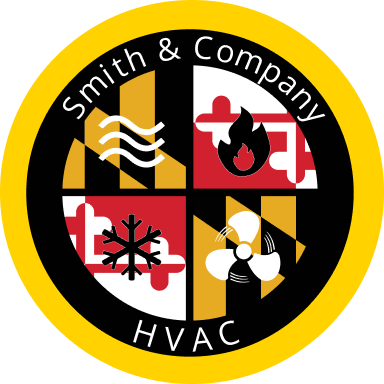
When most people think about cooling their homes efficiently, they picture new air conditioners, ceiling fans, or smart thermostats. However, using proper insulation is one of the most effective ways to lower your energy bills and keep your space comfortable year-round.
According to the U.S. Department of Energy, heating and cooling account for roughly 50–70% of the energy used in the average American home. That’s a large slice of your utility bill. If your home is poorly insulated, your air conditioner has to work harder to maintain a consistent temperature, wasting energy and money in the process.
At Smith & Company HVAC, we often find that homeowners call for air conditioning repair when the root of their cooling problem lies in outdated or insufficient insulation. In this blog, we’ll break down how insulation directly affects your cooling costs, signs of poor insulation, and how to improve it for better performance and lower energy bills.
How Insulation Works with Your Cooling System
Insulation acts as a thermal barrier between your indoor space and the outdoor environment. In summer, it helps keep the cool air inside while blocking heat from penetrating through your walls, attic, and roof.
When insulation does its job well:
- Your home stays cooler for longer.
- Your air conditioning system cycles on and off less frequently.
- You reduce strain on the unit, which lowers energy consumption and extends the system’s lifespan.
In contrast, poor insulation means your AC runs constantly just to maintain your desired indoor temperature. This increases wear and tear, resulting in more frequent air conditioning repairs and potentially premature replacement.
Signs Your Insulation Is Hurting Your Cooling Efficiency
You may not be able to see your insulation, but you’ll definitely feel the effects of poor coverage. Here are a few red flags:
1. Uneven Temperatures Throughout the House
If some rooms are significantly warmer than others, it may indicate that certain areas are under-insulated or have air leaks.
2. High Energy Bills
A sudden or consistent spike in your summer energy costs is often the result of your cooling system working overtime to compensate for poor insulation.
3. Constant AC Running
Is your air conditioner rarely turning off? It could be fighting against heat infiltration due to subpar insulation.
4. Hot Walls or Ceilings
Touch your interior walls or ceiling on a hot day. If they feel warm to the touch, heat is entering your home due to insufficient insulation.
Where Insulation Matters Most for Cooling
While every part of your home benefits from proper insulation, certain areas are more critical than others during the summer:
Attic
Heat rises, and during summer, your attic can reach temperatures exceeding 130°F. Without proper insulation, that heat radiates down into your living space, forcing your AC to work overtime.
Exterior Walls
These walls separate your cool indoor air from the hot outdoor temperatures. If they’re not insulated properly, heat easily transfers through them.
Windows and Doors
While not insulated in the traditional sense, sealing around windows and doors with weatherstripping or caulk is essential to prevent cool air from escaping.
Floors Over Unconditioned Spaces
If your floors sit over an uninsulated garage or crawlspace, you’re likely losing cool air downward, especially in older homes.
The Role of Insulation in AC Efficiency
Your AC system is designed based on your home’s size, layout, and insulation level. If insulation is lacking, even a professionally done air conditioning installation may not provide the expected comfort or efficiency.
Proper insulation enhances your HVAC system’s performance. It keeps cooled air inside longer, reducing the frequency and duration of cooling cycles. This lowers energy use, reduces utility bills, and improves comfort.
It also protects your system from overwork. Shortened cycles and less runtime mean fewer repairs, longer lifespan, and lower maintenance costs. Simply put, insulation and AC efficiency go hand in hand.
Pairing Insulation Upgrades with AC Maintenance
If your system seems to be struggling or your energy bills are too high, don’t automatically assume the unit is to blame. Schedule a professional HVAC inspection. An experienced HVAC service provider team can assess your system and insulation needs to determine where improvements will have the greatest impact.
Sometimes, all it takes to get your home running more efficiently is sealing air leaks, upgrading attic insulation, and scheduling routine AC maintenance. In other cases, pairing insulation upgrades with a new air conditioning installation makes sense, especially if your unit is over 10–15 years old.
Insulation Materials That Boost Cooling Efficiency
There are several insulation materials that work particularly well for improving cooling performance:
Fiberglass Batts
Common in walls and attics, fiberglass is affordable and easy to install.
Blown-In Cellulose
Great for attics and tight spaces, cellulose conforms to irregular shapes and adds effective coverage.
Spray Foam
Offers excellent air sealing and insulation in one application. It’s ideal for sealing leaks around windows, doors, and ductwork.
Rigid Foam Boards
Used in walls and basements, foam boards offer a high R-value and reduce thermal bridging.
Choosing the right material and ensuring it’s installed correctly is crucial. Improper installation can decrease efficiency rather than improve it.
The Long-Term Benefits of Proper Insulation
When you invest in quality insulation, you’re lowering your energy bills today and setting your home up for long-term performance. Benefits include:
- Lower demand on your AC system
- Fewer repair calls
- Reduced energy usage and carbon footprint
- Increased comfort and consistent indoor temperatures
- Better indoor air quality (when paired with good sealing)
If you’re considering selling your home in the future, upgraded insulation and energy efficiency can boost its resale value.
Trust Smith & Company HVAC for Comfort You Can Count On

Whether you’re looking to optimize your current system or planning a new air conditioning installation, insulation should be part of the conversation. At Smith & Company HVAC, we help homeowners and business owners across Maryland and Washington, D.C., get the most out of their HVAC systems with expert assessments, upgrades, and reliable air conditioning repair services.
Our team works with you to ensure your space is cool, comfortable, and energy-efficient. From sealing air leaks to optimizing your AC unit’s performance, we do it all.
Our Services Include:
- Residential & commercial air conditioning installation
- Fast and reliable air conditioning repair
- HVAC system inspections and maintenance
- Energy efficiency upgrades and consultations
- Emergency HVAC services
Comfort starts with smarter insulation, and we’re here to help. Call us today or schedule a consultation through our website.
